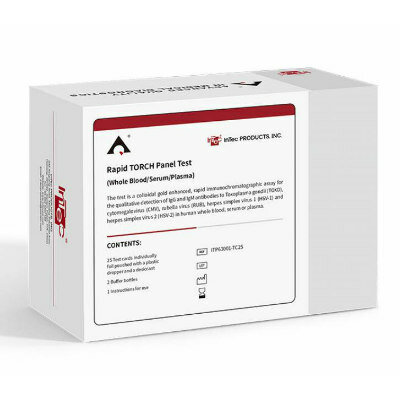Blood Test Could Identify Expectant Mothers at Risk of Preterm Delivery
Posted on 25 Feb 2025
Early preterm birth, defined as delivery before 34 weeks of gestation, carries significant risks for adverse health outcomes. However, there is no universal screening strategy available, which limits the ability to deliver targeted interventions effectively. Researchers have now identified a method to predict which mothers are more likely to experience preterm delivery, opening the door for the development of a universal screening approach.
A research team from Sinai Health (Toronto, ON, Canada) and the University of Toronto (Toronto, ON, Canada) discovered that low levels of placental growth factor (PlGF), a protein crucial for placental development, are linked to preterm birth, specifically before 34 weeks of gestation. The team suggests that a simple blood test to measure PlGF levels in expectant mothers could provide an early indication of the need for enhanced monitoring and delivery planning. PlGF, released into the maternal blood by the placenta, plays a vital role in relaxing maternal blood vessels, helping to stabilize blood pressure despite the increased volume and cardiac output necessary to support the growing baby. It also helps protect the mother from excessive blood loss during delivery. PlGF levels typically rise as the placenta develops, peaking by 28 weeks when the third trimester begins.

Previous research has shown that low PlGF levels are associated with the development of preeclampsia, a dangerous form of hypertension that often requires early delivery. Additionally, fetal growth restriction, which is common in pregnancies with low PlGF levels, accounts for most medically indicated preterm births. The study, which ran from 2020 to 2023, involved over 9,000 pregnant women who had their PlGF levels tested through a blood sample taken during the routine gestational diabetes screening between 24 and 28 weeks. The researchers reviewed the medical records of these patients, assessing birth outcomes such as weight and gestational age at birth. They also checked for preeclampsia by reviewing bloodwork and blood pressure data, confirming the link between low PlGF levels and key pregnancy complications.
The study found that when PlGF levels fell below 100 picograms per milliliter between 24 and 28 weeks of gestation, the risk of preterm birth before 34 weeks was nearly 50 times higher. As only about 1.5% of the population falls into this category, the PlGF test is highly specific, with a low risk of false positives. The prospective observational study, published in JAMA Network Open, demonstrated that factors such as weight, race, and previous pregnancy outcomes did not influence the association between low PlGF levels and preterm birth. This makes PlGF screening a unimodal test, in contrast to most pregnancy screenings, which rely on multiple data points for algorithmic analysis. Many hospitals already have the necessary laboratory technology and expertise to conduct this test, as PlGF is part of early pregnancy risk assessments for Down’s syndrome (trisomy 21). The next step for the research team is to conduct a randomized controlled trial that evaluates the maternal and fetal health benefits of PlGF screening, along with its associated costs, in an effort to encourage provincial and territorial governments to adopt this test.
“This means it’s a very simple test to interpret,” said John Kingdom, a clinician-scientist at the Lunenfeld-Tanenbaum Research Institute at Sinai Health and U of T professor of obstetrics and gynecology. “It doesn’t matter how tall you are, whether you’re Black or white, or if you’ve had a baby before – the test interpretation remains valid regardless of those inputs.”








.jpg)





